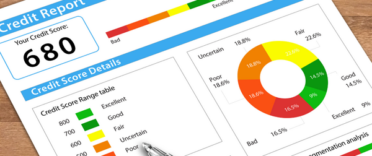Episode 367 - On this week's podcast, I talk about the latest interest rate rise by the Bank of England. I reveal how much the interest rate rise will add to the monthly repayments and what action even those on fixed-rate deals need to be taking now. We talk about 'Buy Now Pay Later' provider Klarna, explaining the likely impact of its decision to start reporting customer transactions to credit reference agencies Transunion and Experian. Finally, Andy explains the help that is available if you are struggling to pay your energy bills including whether a supplier can disconnect your supply if you can't pay.
Join the MTTM Community group, a friendly community that allows like-minded listeners to ask questions and chat.
You can also listen to other episodes and subscribe to the show by searching 'Money to the Masses' on Spotify or by using the following links:
Abridged transcript - Episode 367
Episode 367 Highlights: Rising Interest Rates, Buy Now Pay Later Impact, and Energy Cost Solutions
In this week’s episode of Money to the Masses, Damien Fahy and Andy Leeks focused on three crucial topics: the implications of rising interest rates, changes in the buy now pay later (BNPL) sector, and strategies for managing rising energy costs.
Preparing for fixed-rate mortgage deal ending
Many homeowners, particularly those who have only experienced historically low rates, may be unaware of the significant impact mortgage rate increases could have when their fixed-rate periods end. For instance, if their mortgage rate rises by 1% their monthly payments could increase by approximately £50 per £100,000 borrowed assuming a 25 year mortgage term.
To prepare for these changes, Damien offered several actionable tips:
- Assess Future Mortgage Payments: Use an online mortgage rate rise calculator to estimate how your monthly mortgage payments might increase based on expected interest rate rises. This will help you understand the potential financial impact and start planning accordingly. You can find such a calculator on the Money to the Masses website.
- Build a Financial Buffer: Start setting aside extra funds now to create a buffer that can help offset higher mortgage payments in the future. This buffer can be particularly useful during the transition period when your fixed rate ends, and your payments increase.
- Improve Your Credit Score: Work on improving your credit score to ensure you are eligible for the best possible mortgage rates when you come to remortgage. Steps include paying down existing debts, avoiding taking on new debt, and reducing unnecessary financial commitments like standing orders or subscriptions.
- Review Large Purchases: Reconsider any planned large purchases that might strain your finances. With the possibility of higher monthly mortgage payments, having extra cash on hand could be more beneficial than taking on additional financial commitments.
- Engage with a Mortgage Adviser Early: Don’t wait until your fixed term is about to end before consulting a mortgage adviser. Engaging with an adviser well in advance can help you explore your options, including potentially fixing a new rate early to avoid future rate hikes.
- Maintain Employment and Income Stability: If possible, aim for income stability especially if you are self-employed or seek better-paying employed opportunities. A stable income will improve your mortgage eligibility and reduce financial stress as rates rise.
These tips are designed to help you navigate the changing interest rate environment and ensure you’re better prepared to manage your mortgage and overall financial situation as costs increase.
Resources:
- Interest rate rise calculator
- Bank of England raise interest rates to 1%: How will it affect you?
- Bank of England yield curves
- Klarna payments to be included on credit reports
- What is a good credit score – and how to improve yours
- LOQBOX review
- Getting help if you can't afford your energy bills



